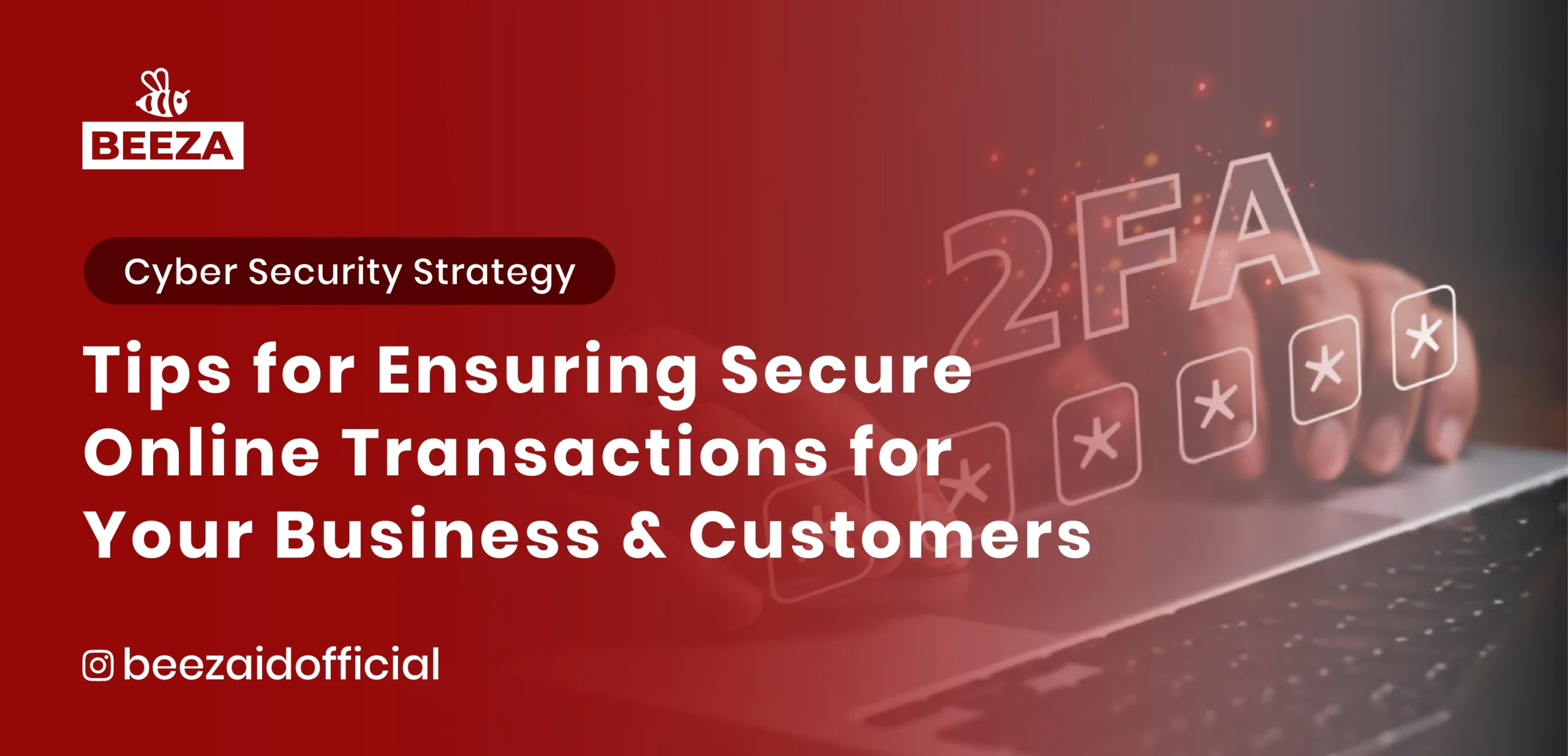
Did you know that cyberattacks on online transactions have increased by over 30% in recent years? As digital transactions become the foundation of modern business, the demand for secure and reliable payment systems is more critical than ever. For businesses handling sensitive customer data and payment details, implementing secure online transaction practices is more than a precaution—it’s essential for building trust and protecting revenue.
This guide highlights best practices for ensuring secure online transactions, from encryption methods and secure payment gateways to the importance of educating customers on online safety.
Why Secure Online Transactions Are Important
Online transactions are more than just a transfer of money; they represent trust between businesses and customers. When businesses fail to protect transaction data, they risk not only financial loss but also damage to their reputation. Securing online transactions is a proactive approach that helps safeguard business interests and customer trust. Here’s how you can achieve secure online transactions with proven methods:
- Encryption: Protecting Data from Start to Finish
What is Encryption?
Encryption transforms sensitive data into an unreadable format for unauthorized users. Only those with the correct decryption key can access the data, making it an essential tool in preventing fraud and protecting customer information.Best Encryption Practices:- Use SSL/TLS Protocols: Secure Sockets Layer (SSL) and Transport Layer Security (TLS) protect data during transmission. Ensure your website has an SSL certificate (indicated by “HTTPS” in the URL).
- Advanced Encryption Standard (AES): AES-256 encryption provides high security for sensitive data, ideal for businesses handling large volumes of customer data.
- Regularly Update Encryption Protocols: Cyber threats evolve, and encryption standards must keep up. Regularly updating encryption protocols ensures your business maintains a strong defense.
An online retailer that implemented AES-256 encryption across all customer interactions reported a 25% reduction in security breaches, underscoring the importance of this step. - Choosing a Secure Payment Gateway
Why Payment Gateways Matter
A secure payment gateway is essential for businesses handling online transactions. Payment gateways act as intermediaries between customers and merchants, encrypting and securing payment data from start to finish.Characteristics of a Secure Payment Gateway:- PCI Compliance: The Payment Card Industry Data Security Standard (PCI-DSS) ensures gateways meet industry standards for data security. Look for providers that are PCI-certified.
- Tokenization: This process replaces sensitive payment information with tokens, reducing the risk of data exposure. Ensure your payment gateway provider supports tokenization.
- Fraud Detection and Prevention: Many payment gateways offer tools to detect and block fraudulent activity, such as multi-factor authentication (MFA) and biometric verification.
Many businesses opt for reputable payment providers that offer robust security features like tokenization and PCI compliance, reducing the chances of data theft. - Educating Customers on Online Safety
Why Education Matters
While secure systems are essential, customers also play a role in ensuring transaction security. Educating customers on recognizing safe transaction practices empowers them to take additional preventive measures.Tips for Educating Customers:- Provide Clear Instructions on Secure Transactions: Display security practices on your site, such as recognizing “https” in the URL or the importance of two-factor authentication.
- Encourage Unique Password Use: Promote the use of complex and unique passwords, and remind customers to avoid using the same password across multiple sites.
- Raise Phishing Scam Awareness: Use blog posts, newsletters, and notifications to inform customers about phishing threats and teach them how to recognize and avoid suspicious links.
An e-commerce platform that regularly sends safety newsletters and phishing scam reminders reported fewer customer security issues. A study found a 40% decrease in phishing-related breaches among informed customers. - Implementing Two-Factor Authentication (2FA) for Added Security
Benefits of 2FA
Two-factor authentication adds an extra layer of protection by requiring two forms of verification, usually a password and a secondary code sent to the user’s device. This method is highly effective in preventing unauthorized access.Best Practices for 2FA:- Offer Multi-Method 2FA Options: Provide customers with multiple verification options, including SMS, email, or app-based codes.
- Educate on Its Benefits: Explain to customers how 2FA enhances their security and encourage them to enable it for their accounts.
- Provide Backup Options: Ensure users have access to recovery methods if they lose their primary device or access to their 2FA codes.
- Routine Security Audits and Monitoring
Importance of Security Audits
Security audits help identify vulnerabilities in your system before they become major issues. Regular checks ensure all protocols are up-to-date and that your security measures are effective in preventing breaches.Steps for Effective Security Audits:- Partner with Cybersecurity Experts: Conduct thorough security checks with cybersecurity firms specializing in online transaction security.
- Perform Penetration Testing: This method simulates cyberattacks to identify potential vulnerabilities, ensuring your defenses are solid.
- Establish Monitoring Protocols: Continuous monitoring allows real-time threat detection, enabling faster responses to breaches.
Conclusion
- Encryption Protects Data: Encryption methods like SSL/TLS and AES keep sensitive information secure during transactions.
- A Secure Payment Gateway is Crucial: Choose a PCI-compliant gateway with tokenization for safer payments.
- Customer Education is Key: Inform customers on safe online practices to enhance security on both sides.
- 2FA Adds an Extra Security Layer: Two-factor authentication is an effective barrier against unauthorized access.
- Routine Security Audits Prevent Breaches: Regular audits keep security systems up-to-date and identify weak points.
To create a secure transaction environment that builds customer trust, implementing these best practices is essential. If you’d like to learn more about applying these strategies to your business, visit our website and contact us to discuss customized solutions.